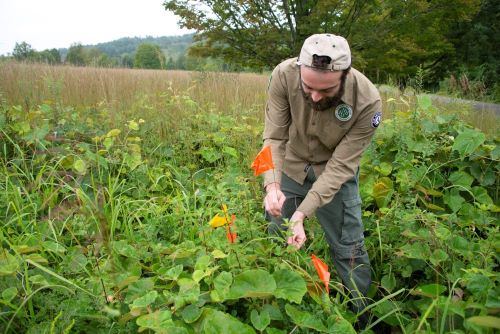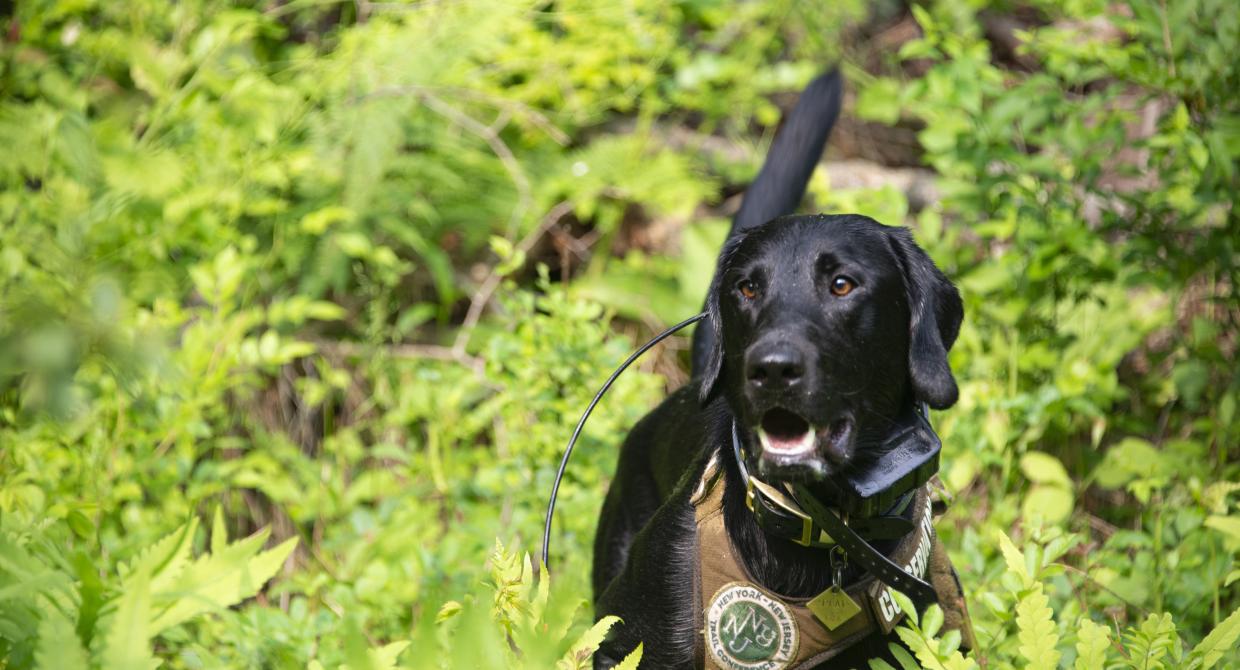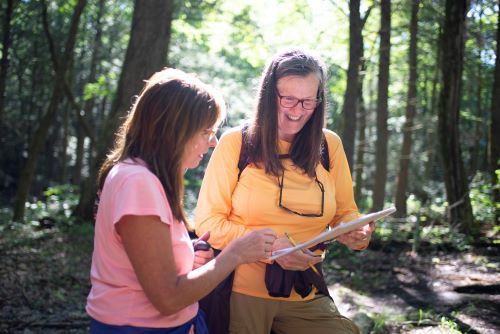
Protecting the Land We Love | National Invasive Species Awareness Week
Title

Body
Upon hearing the term “invasive species,” you may immediately think of spotted lanternfly - or maybe even giant hogweed (bonus points for the latter)! Invasive species are non-native species that have negative impacts that outweigh their possible benefits and cause environmental, ecological, economic, or human harm. For example, spotted lanternfly poses a threat to our orchards and vineyards while giant hogweed possesses a photo phytotoxic sap, meaning when it reacts with your skin it takes away your skin's ability to block UV rays, which can cause severe burns. Yikes.
Thankfully, the Trail Conference is home to many programs dedicated to mitigating the negative impacts of invasive species and promoting the native habitats of our region.
The most charismatic of our programs is, of course, the Conservation Dogs Program. This program utilizes the specialized noses of trained dogs to detect small or cryptic species that are otherwise difficult to find with human senses alone. With their enhanced sense of smell, our Conservation Dogs help us find unknown infested sites, map out where infestations may be spreading, and detect hard-to-find individuals that could lead to persisting infestations if gone unnoticed.
Our Invasives Strike Force (ISF) Crew is yet another program within the Trail Conference that helps protect our ecosystems from invasive species. As part of the Trail Conference Conservation Corps and funded through the Lower Hudson PRISM, the ISF is a conservation-based crew devoted to eradicating, containing, and preventing the establishment of emerging terrestrial invasive species within the Lower Hudson Valley, protecting valuable habitats within the region.
The Conservation Dogs and ISF Crew work together on Scotch broom, an emerging invasive plant in New York State. With only a few dozen populations in the Lower Hudson Valley including Storm King, Harriman State Park, and Bear Mountain State Park, the aim of this project is to completely remove this species from our region, preventing its spread and protecting our local ecosystems - particularly meadow habitats (its preferred environment). With Scotch broom’s ability to push out native species and produce seeds viable for up to 30 years, the ISF Crew and Conservation Dogs have made this project a priority.
After the ISF crew has performed removals, Conservation Dog Peat returns to sites to sniff out any remaining plants accidentally left behind - which are then promptly removed. In Harriman State Park alone, there has been a nearly 60% decrease in the number of plants managed/removed (from 13,945 to 5,688), signifying this project’s continued progress!
For those interested in directly helping protect the land we love, you can get involved with our volunteer Trails and Ecology (T&E) Program (formerly the Invasives Strike Force Surveyor program). Our T&E volunteers help survey and monitor high-priority and/or emerging invasive species along our trail systems. Last year’s program focused on the identification and reporting of five invasive species: beech leaf disease (BLD), spotted lanternfly (SLF), hemlock woolly adelgid (HWA), black swallowwort, and tree of heaven. Data collected by volunteers helps us better understand the distribution and rate of spread of these species and identify candidate sites for biological control releases. We also use this information to work toward better management practices and possible forest restoration opportunities. A win-win-win!
To learn more about our invasive species and stewardship programming, visit: nynjtc.org/content/stewardship
(This piece is published in honor of National Invasive Species Awareness Week (NISAW) taking place February 26 through March 3, 2024).

